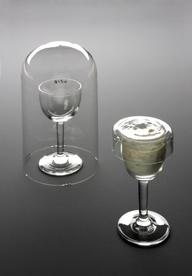

Freezing microtome, London, England, 1883-1885
- modifier:
- J. W. Groves and
- W. Fearnley
- maker:
- James Swift and Son Limited

Freezing mictotome, Fearnley's modification of Grover-Williams ' design, by Swift, London, c. 1883
Invented in 1881, this type of freezing microtome used ice and salt to freeze animal and plant specimens to be sliced for microscope slides. Ice and salt were replaced by a removable ether spray in 1883. Freezing hardened and preserved the specimens’ structure quickly. Chemical preservation usually took six weeks but by using ether the process took a matter of seconds. Once frozen, a razor, operated by hand and secured by a tripod, moved across the top of specimen, creating slices. The slices were then mounted, stained and studied under the microscope by histologists. The knife and tubing is missing.
Details
- Category:
- Microbiology
- Collection:
- Sir Henry Wellcome's Museum Collection
- Object Number:
- A627272
- Measurements:
-
overall: 165 mm 205 mm, 1.24kg
- type:
- freezing microtome



